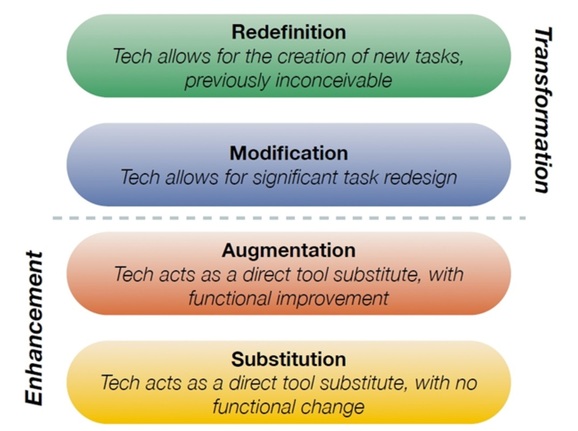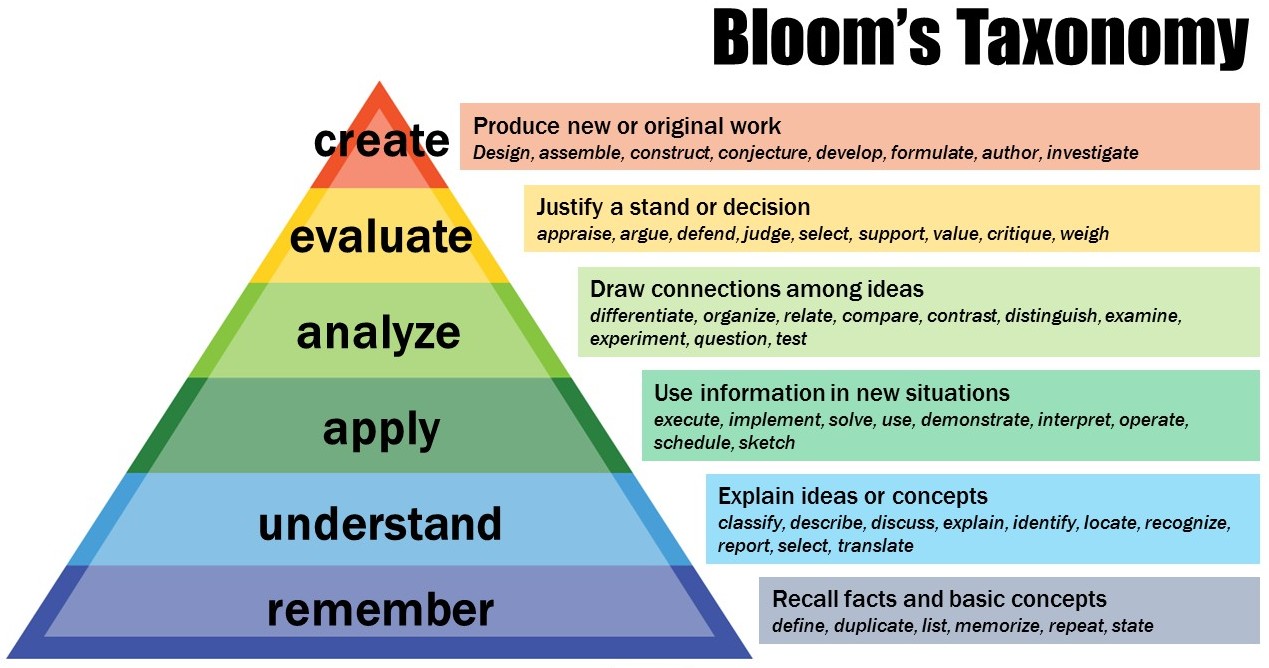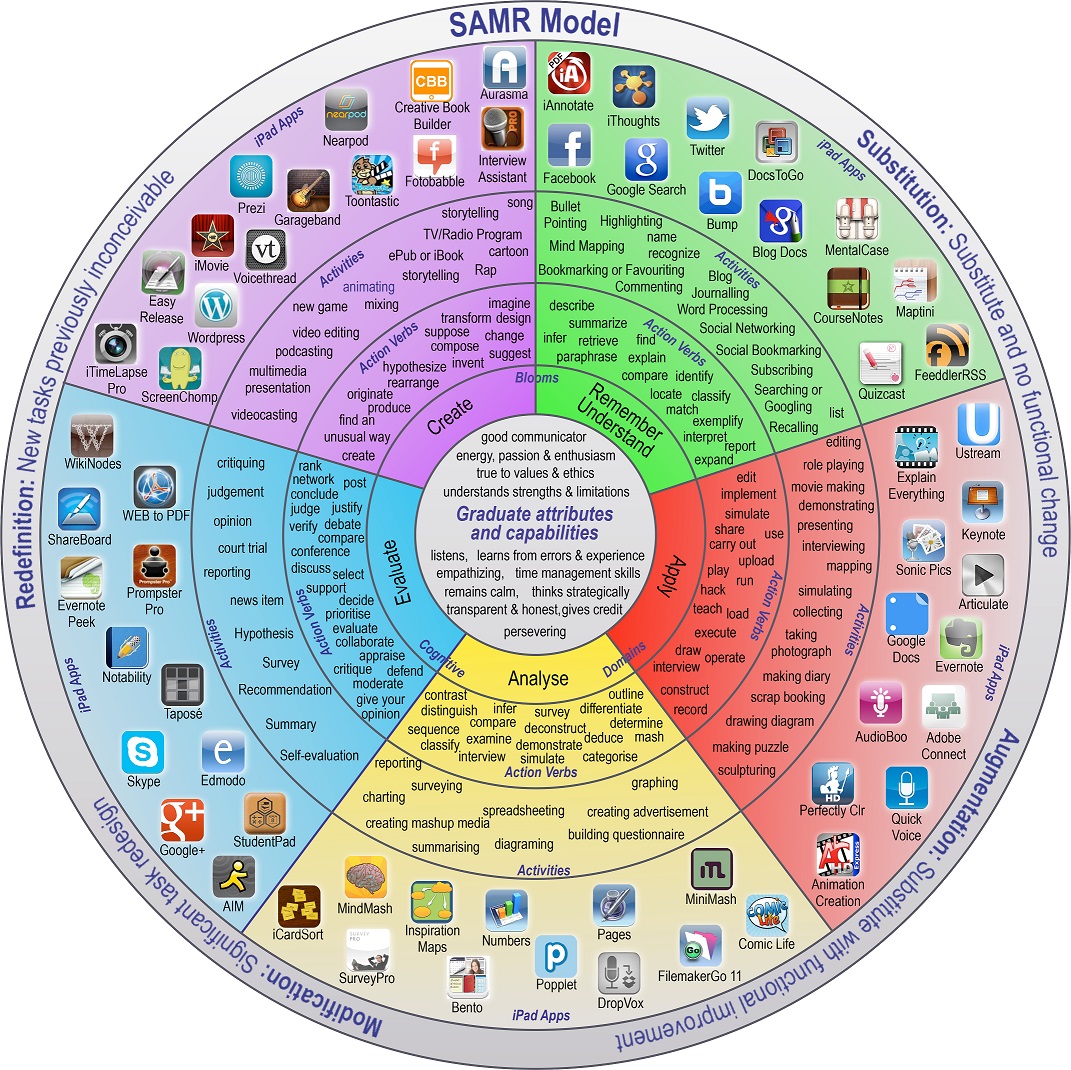
Figuring out the right technology tools to use for your particular lesson can be a real problem, especially when there is so much out there and so little real guidance. So for those teachers who want to start doing more tech integration in their classes, what do you do? How do you start?
The answer is SAMR!
SAMR stands for Substitution, Augmentation, Modification and Redifinition, and is a model for integrating technology into classroom teaching. It was a model created by Dr Ruben Puentedura, the Founder and President of Hippasus, an educational consulting firm focusing on transformative applications of information technologies to education. The four words of the SAMR model, signify the four different ways you can use technology in the classroom from the most basic integration (Substitution) to the most advanced integration (Redifinition). The four sections can be halved with the lower part showing how technology enhances learning, and the upper part transforming learning totally, adding another dimension previously not possible without the integration.

There is so much information available online about what the SAMR model is and how it can be used, that there is no point me going into anymore detail (see source links below). However, for a brief description, watch the video below.
Many teachers will already know about Blooms Taxonomy, which wikipedia describes as "a set of three hierarchical models used to classify educational learning objectives into levels of complexity and specificity". As teachers, we concentrate more on the cognitive domain of Bloom's Taxonomy, which covers Remembering, Understanding, Applying, Analyzing, Synthesizing and Evaluating. The popular image below shows this quite well with Create on top.

The great thing is that those who are already familiar with the image above can easily use this as a guide to SAMR with the image below of the new updated Pedagogy wheel which was created by Allen Carrington, an Instructional Designer from the Learning and Teaching Development Unit at the University of Adelaide in Australia (Click the picture for a larger image).
Carrington's image, which was inspired by the work of Sharon Artley and Paul Hopkins not only contains descriptions and keywords for the sections of Bloom's, along with the SAMR partitioning, but also the apps and programs that you can use to help you achieve the learning goals required. You can't get more wholistic than this.
Not only does this help with teaching, but this can also form a very good theoretical basis for research into education technology use in schools (yay me!). Check out the sources below for more information.
Sources:
- http://www.edudemic.com/new-padagogy-wheel-helps-you-integrate-technology-using-samr-model/
- https://www.commonsensemedia.org/videos/introduction-to-the-samr-model
- https://cft.vanderbilt.edu/guides-sub-pages/blooms-taxonomy/
- http://www.schrockguide.net/samr.html
- http://www.hippasus.com/rrpweblog/
- https://www.commonsensemedia.org/videos/ruben-puentedura-on-applying-the-samr-model
- http://redarchive.nmc.org/ruben-puentedura-board-member
- http://hippasus.com/blog/
- http://coachescorner.rchk.edu.hk/samrrat-model.html
- https://brholland.wordpress.com/2014/02/25/in-response-to-redefinition/
- http://blog.practutor.com/bloom-your-lessons-plans-with-an-ipad-the-pedagogy-wheel/
- http://www.mmiweb.org.uk/hull/ipad/padagogy.html#wheel
- http://blog.practutor.com/the-samr-model-explained-for-teachers/
